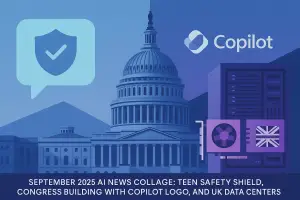The Global Rise of Deepfakes in Media, Politics, and Entertainment
Deepfake technology has become one of the most disruptive innovations in the digital era, rapidly evolving in complexity and prevalence. Powered by cutting-edge advancements in artificial intelligence (AI) and machine learning, particularly through Generative Adversarial Networks (GANs), deepfakes produce hyper-realistic videos and audio clips where people appear to say or do things they never actually did. Initially developed for creative and entertainment purposes, this technology has expanded globally, impacting various industries and raising widespread ethical and security concerns.
Entertainment Industry Transformation
Globally, deepfake technology is revolutionizing the entertainment landscape. Hollywood and international film industries are leveraging it to resurrect deceased actors, de-age performers, and create visually compelling scenes without the need for costly CGI. In China, the entertainment industry has embraced deepfake technology to create virtual idols that perform in concerts and appear in advertisements. South Korean media companies have used AI-generated avatars to produce hyper-realistic K-pop stars, blending reality with fiction to captivate audiences.
Moreover, social media platforms like TikTok, Instagram, and Snapchat have popularized deepfake filters, allowing users worldwide to mimic celebrities or create fictional personas. In video gaming, developers are incorporating deepfake technology to produce immersive, lifelike characters, pushing the boundaries of interactive storytelling.
Political Manipulation and Misinformation
However, the rise of deepfakes has a dark side, with global political systems increasingly vulnerable to manipulation. In the U.S., doctored videos targeting political figures have gone viral, eroding public trust. During elections in India, deepfake videos circulated to manipulate voter perceptions. In Africa, disinformation campaigns using deepfake content have threatened political stability, spreading false narratives during critical election periods.
Deepfake technology has also been used to impersonate political leaders globally, creating fabricated speeches and statements that can incite unrest and influence international relations. The global nature of social media amplifies the reach and impact of such misinformation, making it a transnational issue that demands coordinated responses.
Cybersecurity and Corporate Espionage
Beyond politics, deepfakes pose significant cybersecurity risks worldwide. In Germany, criminals used AI-generated audio to impersonate a CEO, tricking an employee into transferring €220,000. Similar fraud attempts have been reported across Asia and North America, highlighting the global scale of this threat.
Corporations across industries are facing new challenges in securing communications and verifying identities. Deepfake technology allows malicious actors to bypass security protocols, launch phishing attacks, and manipulate internal communications, causing financial and reputational damage on a global scale.
Global Regulatory Efforts to Combat Deepfakes
Governments worldwide are recognizing the need for stringent regulations to address the growing threat of deepfake technology. While the UK is advancing with its Online Safety Bill, other countries are also introducing measures to combat malicious deepfake use.
United States
In the U.S., several states have enacted laws targeting deepfake misuse. California and Texas have passed legislation criminalizing the distribution of deepfake media intended to influence elections or create non-consensual explicit content. At the federal level, the Deepfake Accountability Act seeks to mandate watermarks on AI-generated content to identify manipulated media.
European Union
The European Union is addressing deepfakes through the Digital Services Act (DSA), which imposes strict content moderation requirements on digital platforms. Additionally, the EU’s Artificial Intelligence Act is set to regulate high-risk AI systems, including deepfakes, with an emphasis on transparency and accountability.
Asia-Pacific
China has implemented laws requiring deepfake content to be clearly labeled and prohibiting the use of deepfakes for disinformation. South Korea is considering comprehensive legislation to criminalize harmful uses of deepfake technology, particularly in the creation of non-consensual adult content.
International Collaboration
International bodies like the United Nations and the G7 have acknowledged the need for a coordinated global response. These forums are exploring collaborative frameworks to address cross-border challenges posed by deepfakes, focusing on cybersecurity, election integrity, and digital rights.
Advanced Tools to Detect and Counter Deepfakes
As deepfake technology becomes more advanced, global efforts to detect and mitigate its impact are accelerating. Researchers, tech companies, and governments are developing innovative solutions to combat deepfake threats.
- Microsoft Video Authenticator: This global tool analyzes visual and audio content to detect deepfake manipulations by identifying subtle fading and pixel inconsistencies.
- Deepware Scanner: Used by journalists worldwide, this tool scans videos to assess the likelihood of deepfake manipulation, helping media outlets verify authenticity.
- Sensity AI: Operating internationally, Sensity AI monitors online content for harmful deepfake videos, providing real-time alerts to organizations and governments.
- Adobe Content Authenticity Initiative (CAI): Adobe’s global initiative embeds metadata into digital files to authenticate media and trace edits, enhancing content integrity.
- Intel FakeCatcher: This tool, analyzing biological signals in videos, offers real-time detection of deepfakes, making it effective for global cybersecurity applications.
- Blockchain-Based Verification: Companies worldwide are integrating blockchain technology to verify media authenticity, creating secure, tamper-proof content records.
Conclusion
Deepfake technology represents a global challenge with profound implications for privacy, security, and democracy. While it offers creative opportunities in entertainment and media, its misuse for disinformation, fraud, and exploitation poses serious risks. Countries worldwide are adopting diverse strategies to regulate and combat deepfakes, from legislative reforms to technological innovation.
Ongoing international collaboration, comprehensive regulations, and cutting-edge detection tools are vital to mitigating the dangers of deepfakes. Empowering the public with digital literacy and fostering transparency in AI development will be essential in safeguarding societies globally.
Freaky Fact
Did you know that a deepfake video of former U.S. President Barack Obama was one of the first viral examples used to raise awareness about the dangers of this technology? Created by filmmaker Jordan Peele in 2018, the video served as a cautionary tale about how convincingly deepfakes can manipulate reality.
Supporting Non-Paywalled Resources
Supporting Non-Paywalled Resources
Global Regulatory Efforts to Combat Deepfakes:
- A Look at Global Deepfake Regulation Approaches – Responsible AI
- Global Regulations on Deepfakes: A Comparative Analysis – LawSayLogic
Advanced Tools to Detect and Counter Deepfakes:
- 8 Best Tools to Detect AI-Generated Videos & Deepfakes in 2025 – Useful AI
- 7 Best Deepfake Detector Tools & Techniques (January 2025) – Unite.AI
Recent Developments and News:
- GitHub’s Deepfake Porn Crackdown Still Isn’t Working – WIRED
- China’s Plan to Make AI Watermarks Happen – WIRED
Disclaimer: This article is for informational purposes only and does not constitute legal or financial advice.


